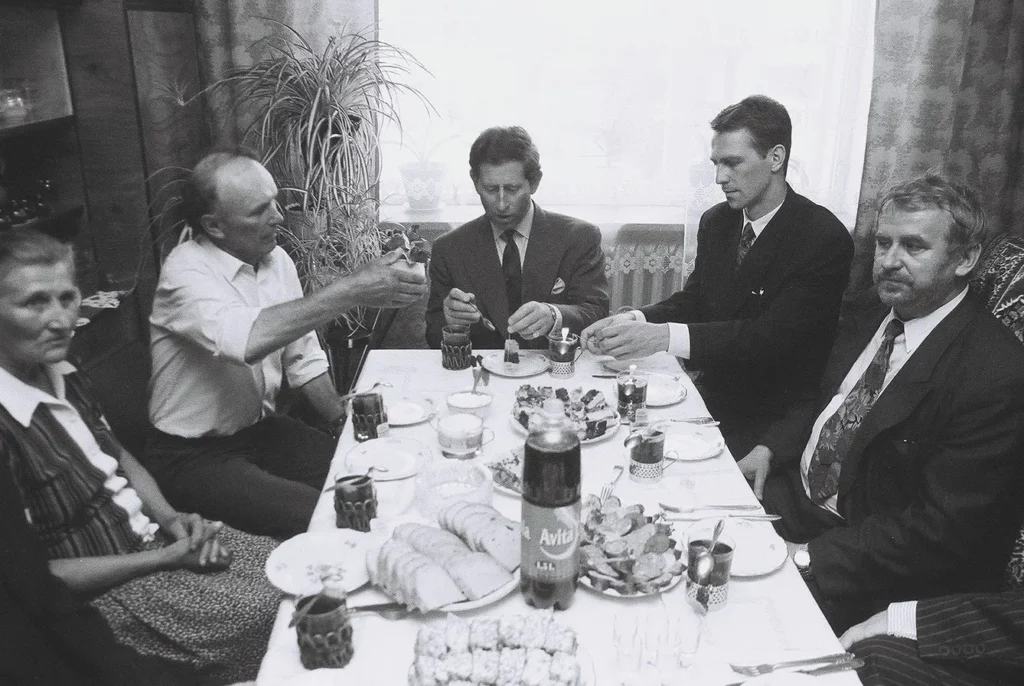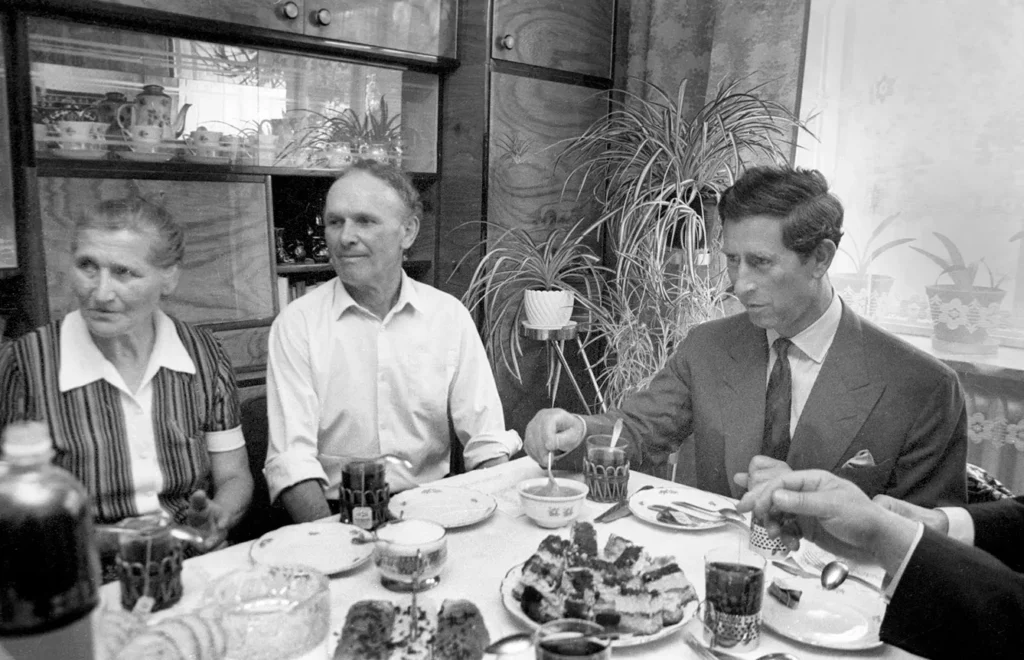“Prince Charles drinking tea from a glass in a basket is one of the best symbols of the simulation we live in,” wrote one user under a Facebook post with a photo that resurfaced in 2022. Though the setup of the scene is familiar, something about the photo seems… off.
It shows a group of people sitting around the table, one in a suit, another in a plain collared shirt, and a woman in a collared dress. The photo features a ubiquitous (in Poland) 1970s wall unit in the background, complete with a potted plant, a table with tea (served in an old-fashioned Polish way, in a cup-sized thin glass, and protected by the tiny basket from burning your hands), some delicious cake, possibly poppy seed cake or cheesecake, on a white table cloth. But yeah, something’s definitely off.
A tea to remember
One of the people in this “candid” shot of what looks like a celebration marking a Polish name day is a bit too fashionable, too all-suited-up, and too much of a then-Charles, Prince of Wales, now King Charles III. It is famously one of the Prince of Wales’ duties, as established by Victoria’s son Bertie, to travel around the world performing vague royal duties. And so, in May 1993, upon invitation from then-president Lech Wałęsa, 45-year-old Charles Stuart, Prince of Wales, spent four days in Poland on his first official visit.


Four days were needed for him to visit four cities: Warsaw, Gdańsk, Cracow, and Lublin. He visited the intended site for the Gdansk Shakespeare Theater (which would finally open around twenty years later). He then visited one of the largest Nazi concentration camps just outside of Lublin, in Majdanek. In his Warsaw speech, he highlighted his Polish ancestry (as the British monarchy is connected to aristocratic families all over Europe).
But, as in the case of all other visits, the unofficial parts are the most interesting. On a later visit, for instance, he toured around Lake Morskie Oko in the Tatra Mountains, where, despite the fact that the area had been thoroughly cleaned, he found a dropped chocolate bar wrapping and, as royals are apparently also wont to do, he put it in the trash bin. He tried potent highlanders’ vodka, chatted with people wherever he was, and was generally at ease.
Tea time at the Bednarczyks
Little is known about the Bednarczyk visit, though, apart from a series of photos by a photojournalist. It was part of his official visit and, unlike the spontaneous events mentioned above, was surely staged. This was 1993, already after the fall of communism, so the propaganda aspect of the visit was perhaps not as important. Still, the photo is captioned “Prince Charles, visiting the house of prosperous farmers Mr & Mrs Bednarczyk.”
One commentator under the photo suggested that the event was, after all… not that important. Note the glass cupboard behind the hosts’ back, part of the wall piece. In it, we can clearly see the “ceremonial” dishes, a set that you use only in case of important events. And yes, Charles and the Bednarczyks sit behind the elegant plates, but the glass?
Why didn’t they serve tea in the proper cup? Were they not aware of the custom? Why didn’t they even associate tea-drinking English culture with the cup, as most people would? And why were they not briefed on the basics of the ceremony?
No matter the answer to those questions, the photo document is a treasure. Its sudden comic effect, juxtaposing vintage Polish village table culture with the associations Charles brought with him, raises a wave of Polish nostalgia.







